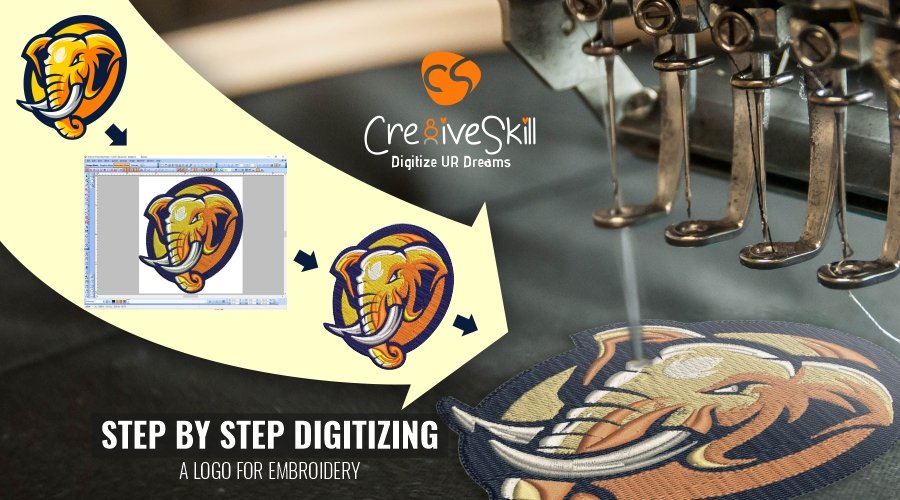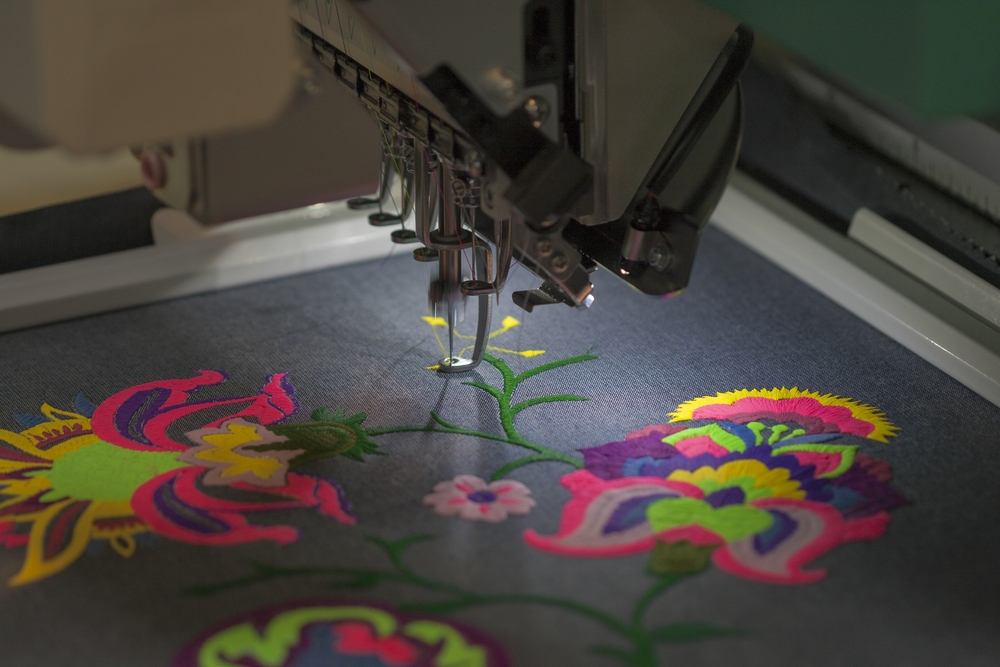Best Digitizing for Embroidery: Enhance Your Projects
Best Digitizing for Embroidery: Enhance Your Projects
Blog Article
Simplifying the Art of Embroidery Digitizing: Step-by-Step Overview
As innovation continues to breakthrough, the digitization process has actually come to be more easily accessible, enabling lovers to bring their intricate styles to life with convenience. In this guide, we will certainly decipher the complexities of needlework digitizing, breaking down each step methodically to simplify the procedure and encourage both beginners and experienced embroiderers alike.
Comprehending Needlework Digitizing Software Program
Needlework digitizing software offers as an essential tool for transforming intricate styles into digital layouts suitable with embroidery devices, facilitating exact sewing and personalization. This specific software enables individuals to import numerous photo file formats, such as JPG or PNG, and transform them right into embroidery machine-readable layouts like DST, EXP, or PES - Digitizing for Embroidery. By utilizing functions like stitch editing, rug choices, and string shade choice, digitizing software program enables users to regulate every aspect of the style procedure
In addition, progressed embroidery digitizing software supplies tools for creating intricate styles, adjusting stitch thickness, and incorporating intricate details. Customers can additionally sneak peek the layout prior to sewing it out, making sure accuracy and decreasing mistakes. Furthermore, several software program programs offer automatic attributes that aid simplify the digitizing process, saving effort and time.
Understanding the capabilities of embroidery digitizing software is essential for accomplishing top notch lead to needlework jobs. By mastering this tool, needlework lovers and specialists can unleash their creative thinking and bring intricate styles to life with precision and efficiency.

Selecting the Right Layout File
After familiarizing on your own with the capabilities of embroidery digitizing software, the following critical action in the procedure is selecting the ideal style apply for your task. Digitizing for Embroidery. When choosing a layout declare needlework digitizing, it's crucial to take into consideration the complexity of the design, the dimension of the end product, and the kind of material you will be working with
For intricate styles with great information, a high-resolution photo or vector file is recommended to make sure that the needlework device can precisely duplicate the style. Additionally, the size of the end product plays a considerable duty in picking the ideal layout data. Bigger layouts might require greater resolution documents to preserve clearness and intensity.
Moreover, the kind of textile you will be embroidering on affects the selection of style data. Various fabrics may call for changes in the style documents to make sure that the stitches are properly straightened and the layout looks like intended. By carefully picking the right style data based on these factors, you can establish yourself up for a successful embroidery digitizing process.
Digitizing Devices and Techniques
Using specialized software and accuracy methods, digitizing devices are important in transforming complex styles right into embroidery-ready data. Needlework digitizing software, such as Wilcom, Hatch, or Embrilliance, provides the necessary platform to transform artwork right into stitch data. These programs offer features like stitch editing, underlay alternatives, and lettering tools to guarantee the style equates seamlessly onto material.
One of the essential strategies in digitizing is creating a clear course for the embroidery maker to follow. why not try here This involves digitizing each element of the layout with precision, figuring out stitch kinds, densities, and directions. By utilizing tools like digitizing tablet computers or software-specific plugins, embroiderers can accomplish a high level of accuracy in their digitized designs.
Additionally, understanding the art of rug sewing is critical for producing quality embroidery. Underlay sewing maintains the material and produces a foundation for the style, ensuring that the end product is both aesthetically appealing and lasting. By understanding these digitizing tools and techniques, embroiderers can elevate their craft and bring detailed layouts to life with precision and performance.
Personalizing Stitch Kinds and Directions
Having actually established a structure in digitizing devices and strategies, a critical facet beforehand needlework workmanship depends on customizing stitch types and directions with precision and objective. The choice of stitch kinds can significantly affect the general look and structure of the stitched style. Satin stitches, known for their smooth and glossy surface, work well for producing borders and text. On the other hand, fill stitches are suitable for covering larger areas efficiently. By tactically combining these stitch types, embroiderers can attain deepness and dimension in their styles.
Moreover, the direction of stitches plays a critical duty in enhancing the visual charm of the final embroidery. By experimenting with various stitch angles and patterns, embroiderers can bring their styles to life with remarkable detail and ins and out.
Testing and Refining Your Digitized Style
To make certain the accuracy and quality of your digitized style, complete screening and improvement are vital action in the needlework digitizing procedure. As soon as you have finished the digitization of your design, it is vital to test it prior to waging the actual needlework. Testing enables you to identify any possible issues such as string breaks, stitch density problems, or design distortions that may affect the result.

After testing, it is essential to fine-tune your digitized click to read more layout based on the feedback from the examination sew-out. This may involve tweaking sew settings, readjusting densities, or making changes to the general design to achieve the wanted end result. By repeating through screening and improvement, you can adjust your digitized style to excellence prior to moving onward with the real needlework process.
Final Thought
In final thought, understanding the art of needlework digitizing needs a detailed understanding of the software, selecting the ideal style file, making use of digitizing devices and strategies, personalizing stitch kinds and instructions, and screening and refining the digitized layout. Check This Out By adhering to these steps, embroiderers can streamline the digitizing process and create top notch stitched styles with precision and performance.
Report this page